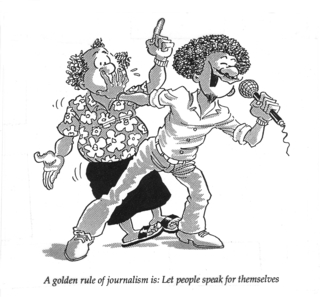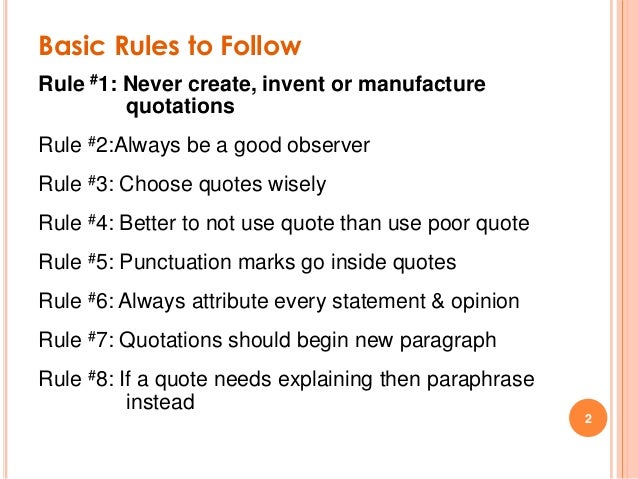(Disclaimer: This content has been compiled by the students from various sources. These notes are to be used purely for academic purposes. No copyright infringement intended. The blogger will not be responsible in any manner whatsoever, regarding the authenticity of the information included in the notes.)
Time Period: The mentioned topic was discussed in class in the third week of August, 2025.
What is a News Embargo?
An embargo is an agreement between a source and a media outlet that information — often contained in a press release — will not be published until a predetermined time.
It is a media release or announcement that is shared with the media in advance of its publishing date.
Embargoed press releases are designed to be used for big announcements or news items that need to be handled either with particular care or in a time-sensitive manner.
They are often used by businesses making product announcements, by medical journals, and by government officials announcing policy initiatives; the media is given advance knowledge of details being held secret so that reports can be prepared to coincide with the announcement date and yet still meet press time.
Embargoed press releases are often used for particularly complex, important or time sensitive news items, so they help journalists and reporters to prepare their story in advance before press time. It also allows journalists to have enough time to absorb information, especially when the information is a complicated one. They have the time to research it and put the pieces together. They allow for an increased impact of the story or information being delivered because not one or two media outlets publish it at the same time but several media outlets. This significantly increases the impact of the story or information.
Features:
It involves sharing news in advance.
It is based on the element of trust.
It is usually non- binding in nature. (other serious repercussions might be there)
The Statement of Time plays a crucial role.
When to Use Embargoes:
If the announcement is complex and needs demonstrating and explaining.
If there are commercial reasons why details can't be shared gradually over time beforehand, such as competitive pressure.
If the information being shared pertains to public health or safety concerns and therefore needs to be released carefully and at the right time so as not to cause public confusion or panic.
The information being shared would be a security risk to the individual or organization concerned. (for example: news that would share the location of a high-profile individual in a way that may compromise their security)
New government policies, laws or budget announcements. News items surrounding these are often embargoed until after official government announcements have been made.
If you want to manufacture buzz: when everyone is reporting on a particular story at once, it creates the impression that the story involves something BIG.
Examples of News Embargo
Embargo was used when the then President of the U.S. George W. Bush visited Iraq on Thanksgiving Day in 2003. The President’s visit to Iraq was an unannounced trip, but some reporters knew about it in advance. Reporters were told not to break the news until the President’s trip was concluded. The embargo further went on to state that if news of the trip broke, then the entire trip would be cancelled.
Information related to the financial budget of a country is usually embargoed. In a few countries, including Australia and Canada, embargoes are in place surrounding the release of government announcements. This means that journalists have access to government decisions ahead of the general public, meaning that they’re able to prepare their stories but not able to share the updates publicly until the official announcement by government members or representatives has taken place.
Hikes in oil prices can affect the entire world economy and thus this information is also embargoed to a large extent.
Some press briefings are regularly embargoed. The biweekly briefings from the International Monetary Fund are embargoed until the same time each fortnight. Due to the impact the information shared can have on global stock markets, updates are collated and released at a consistent time, rather than day by day.
A pharmaceutical company embargoes a breakthrough cancer treatment so journalists can consult medical experts before publishing.
Repercussions of Breaking an Embargo
The understanding is that if the embargo is broken by reporting before then, the source will retaliate by restricting access to further information by that journalist or their publication, giving them a long-term disadvantage relative to more cooperative outlets.
News organisations sometimes break embargoes and report information before the embargo expires, either accidentally (due to miscommunication in the newsroom) or intentionally (to get the jump on their competitors). Breaking an embargo is typically considered a serious breach of trust and can result in the source barring the offending news outlet from receiving advance information for a long period of time.
Links to notes on Embargo from previous years:
Year: 2017
https://vartikananda.blogspot.com/2017/09/what-is-embargo-in-journalism.html (Year: 2017)
https://vartikananda.blogspot.com/2024/12/news-embargo-ioj-paper-unit-1.html (Year: 2024)
............
DEFINITIONS
- An
agreement between the source and the media organization: The latter is
provided with news that ought not to be published until a certain date.
- An
embargoed release is a media release or announcement that is shared with
the media in advance of its publishing date.
- An
embargo is an agreement between a source and a media outlet that
information—often contained in a press release—will not be published until
a predetermined time.
- Limitation
on the earliest time when a news item given to a journalist can be
published or broadcast, usually a date.
FEATURES
- It
involves sharing of news in advance.
- It
is based on the element of trust.
- It
is usually non- binding in nature. (other serious repercussions might be
there)
- The
Statement of Time plays a crucial role.
ORIGIN
The origins of the press embargo have not yet been
explored by the social sciences. The majority of experts trace the embargo back
to World War I or a little earlier. [World War I is 11 often called the first
war of media or pictures (Paul 2014)]. This was the period when great powers in
Europe began to professionalize their propaganda and thus tightened the rules
for the publication of news. There is another set of experts who believe that
embargoes emerged in 20th century. Against this Ron Smith, a
professor of public communication at Buffalo State University, US, considers it
possible that the embargo might already have emerged in the 19th century in the
US. “Embargoes are probably an American contribution to the field of
journalism, in that they seem to have originated from the days when mail (and
thus news stories) travelled by coach and train, sometimes arriving several
days after they were sent” (Smith 2014).
The exact origin still remains a highly debated topic.
KEY AREAS WHERE EMBARGOES ARE USED
a.
Science
b.
Healthcare
c.
Technology
d.
Areas of security and national interests
EXAMPLES
- Embargo
was used when then President of the United States George W. Bush visited
Iraq on Thanksgiving Day in 2003. The President’s visit to Iraq was an
unannounced trip, but some reporters knew about it in advance. Reporters
were told not to break the news until the President’s trip was concluded.
The embargo further went on to state that if news of the trip broke, then
the entire trip would be canceled.
- The
United Kingdom’s Ministry of Defense informed some media outlets that
Prince Harry would be serving in Afghanistan. But the condition was that
they would release this information only after the end of his deployment.
But somehow this information got leaked and the officials were forced to
put an end to the embargo. In the end the Prince was removed from the
field.
- Some
media outlets in 2007 published early reviews of “Harry Potter and the
Deathly Hallows,” thereby outraging readers and the publisher with
disclosures of the series-ending book’s key plot points. The news
organizations argued that the embargo had become null and void once an
online discounter began selling copies of the book before the agreed-upon
release date.
- Information
related to financial budget of a country is usually embargoed. In some
countries like Canada and Australia the journalists are kept in lockups
prior to the release of official statement regarding the budget. This is
done to ensure that no insider trading happens.
- To
have synchronized effects on all economies of the world international
organizations often use embargo. For instance International Monetary
Fund’s briefings are usually embargoed until 10:30 a.m. Washington Time.
- Hike
in oil prices can affect the entire world economy and thus this
information is also embargoed to a large extent.
IMPORTANCE IN JOURNALISM
There are so many reasons why news embargoes are
important. Some of the reasons are as follows:
- They
help journalists and reporters to prepare their story in advance before
press time.
- They
allow for an increased impact of the story or information being delivered
because not one or two media outlets publish it at the same time but
several media outlets. This significantly increases the impact of the
story or information.
- They
help in preventing competition among news organizations since every outlet
has access to the story or information.
- They
give journalists ample of time to work on a story, it prevents
inaccuracies.
- They
allow journalists to tell better stories that would be appreciated by the
public.
- They
give journalists enough time to absorb information, especially when the
information is a complicated one. They have the time to research on it and
put the pieces together before press time.
- Honoring
an embargo can help in building strong relationships between journalists
and their sources.
REPERCUSSIONS OF BREAKING AN EMBARGO
News organizations and journalists sometimes break an
embargo and go ahead to report information that they are not supposed to report
until a particular time. Sometimes the news organizations break the embargo
intentionally or sometimes it is unintentional.
When news organizations break
the embargo intentionally, they do so because they want to publish the story
before their competitors and sell more papers or get higher ratings. If a
journalist or news organization breaks an embargo, since it is not a legally binding
agreement, there is nothing the source can do. But it is considered a serious
thing and can damage the relationship between the source and the particular
media outlet that broke the embargo. The action most sources take after a news
organization breaks an embargo is to blacklist them and prevent them from
receiving any information from them again. Sometimes the suspension can be
indefinite depending on the gravity of their offence.
Thus, when a journalist or a news organization breaks
embargoes, in the initial stage they get advantage over their competitors, but
as time goes on they suffer a long-term disadvantage.
WHEN TO USE EMBARGOES?
- If
the announcement is complex and needs demonstrating and explaining.
- If
there are commercial reasons why details can’t be shared gradually over
time beforehand, such as competitive pressure.
- If
you want to manufacture buzz: When everyone is reporting on particular
story at once, it creates the impression that the story involves something
BIG.
DO’S AND DON’TS OF PITCHING AN EMBARGO
- DO get
the facts right ahead of time.
- DO
practice transparency when communicating with different reporters at the
same outlet.
- DO
manage your client’s expectations.
- DON’T
confuse pitching under embargo with pitching an exclusive.
- DON’T
just assume that a reporter accepts the terms of an embargo.
- DON’T
pitch under embargo without doing your homework.
- Be
specific with publication date and time.
- Be
fair with issuing press release embargoes.
- Use
the embargoed press release sparingly.
SOURCES
- Sanjana, Student of Journalism, LSR










